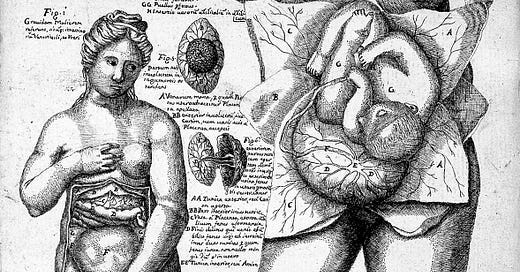Why Women's Anatomy Has a Serious Naming Problem
Spoiler Alert - 98% of Body Parts Are Named After Men.
Here's something that may or may not surprise you: most female body parts were named by men, sometimes in ways that reflect deeply problematic historical attitudes. And the consequences of this linguistic legacy are still playing out in exam rooms and bedrooms today.
The Language of Shame
Take the anatomical term for vulva - "pudendum." This clinical-sounding word comes from the Latin "pudere," meaning "to be ashamed." Think about that - male anatomists in centuries past examined the most intimate part of a woman's body, and decided to classify it as "the shameful thing."
This wasn't an isolated incident. The term was so problematic that it was officially removed from the 2019 edition of Terminologia Anatomica (the international standard for anatomical terminology) because medical professionals recognized the need to move beyond such biased language. Did you catch that?
It wasn’t removed until 2019.
The pattern extends further. Even "vagina" comes from the Latin word for "sheath" or "scabbard," essentially defining the organ by its function as a receptacle rather than recognizing it as a complex part of female anatomy with multiple purposes.
If you want a deeper dive into why women’s health in general kind of sucks and why birth control seems to be the go to solution for any remotely “female” issues, then check out the Today I Learned Science Women’s Health Month Special: The Unholy Trinity of Medical Events that Pressed Pause on Women’s Health for Decades.
A History Written by Men
The historical context matters here: for centuries, medicine was almost entirely male-dominated. Women were systematically excluded from medical education - Harvard didn't admit women until 1945, and some medical schools maintained this exclusion well into the 1960s. When it came time to officially catalog and name human anatomy, men quite literally held the pen.
The numbers are honestly jaw-dropping. A comprehensive 2021 review published in the journal LITFL examined 700 body parts named after people and found that 424 were named after male physicians out of 432 total eponyms. That's 98% male representation. The eight non-male names? Five gods, a king, a hero, and exactly one woman - a 19th-century Russian pathologist named Raissa Nitabuch who got a layer of the placenta named after her. One woman. Out of 432.
Keep reading with a 7-day free trial
Subscribe to Today I Learned Science to keep reading this post and get 7 days of free access to the full post archives.






